|
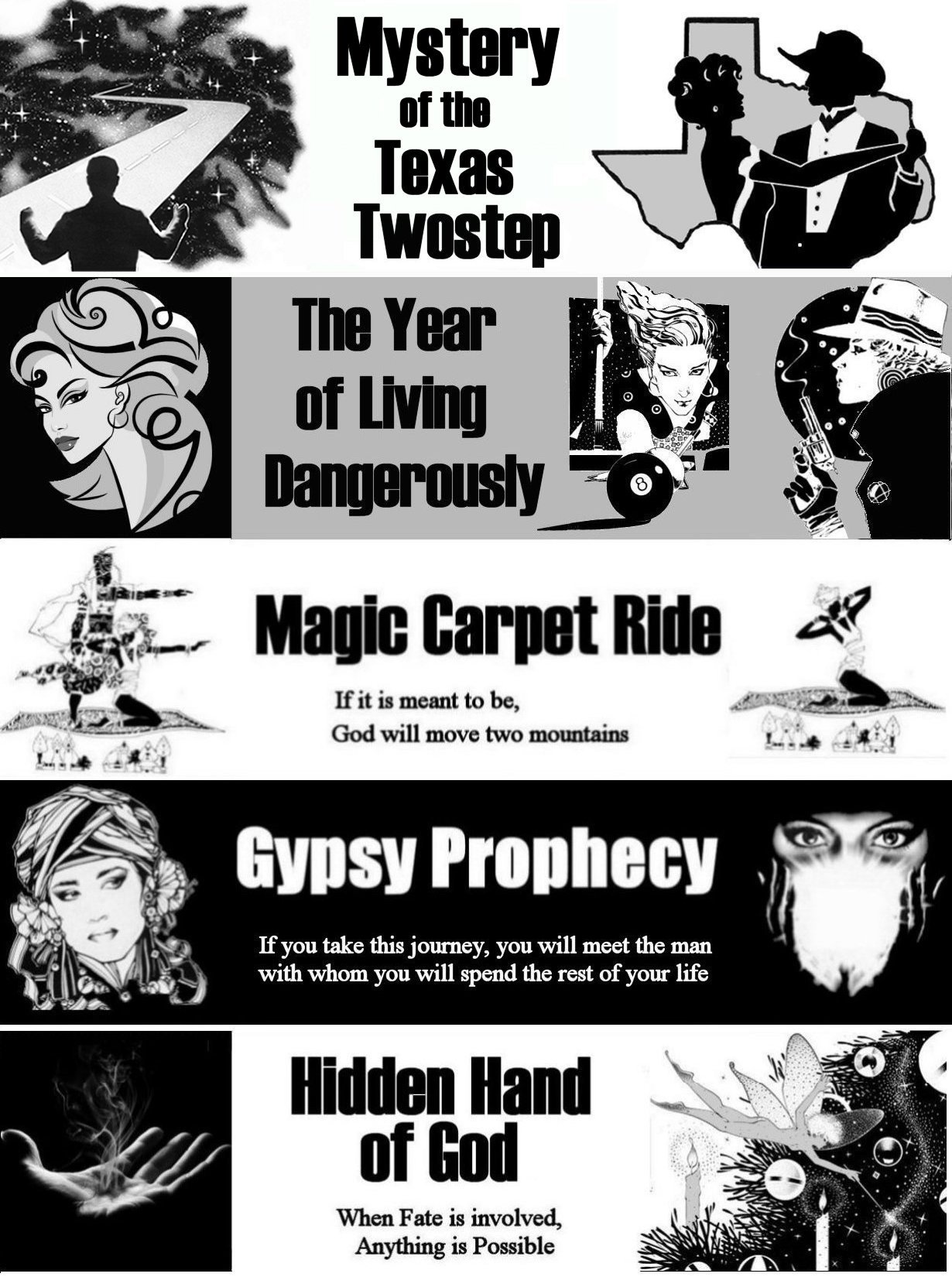
|
MYSTERY OF THE
TEXAS TWOSTEP
CHAPTER THIRTY:
DUMB LUCK
Written by Rick
Archer
|
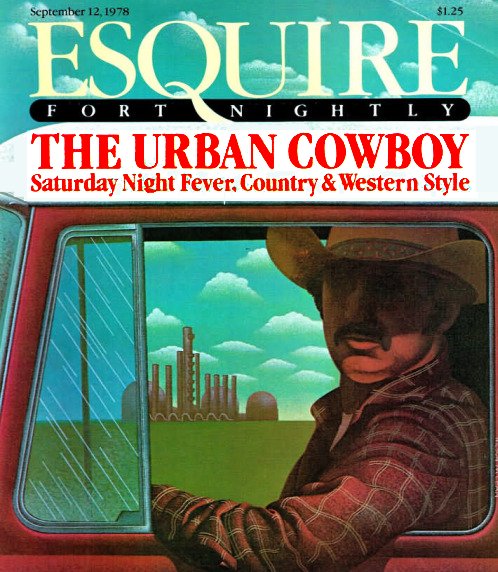 |
Rick
Archer's Note:
Clay Felker was
a sly fellow. Back when he decided to rip off the
Saturday Night Fever story and transfer it to
Gilley's,
Felker could not legally come right out and say 'Sequel'.
However, Felker found an effective way to convey the message
nonetheless.
The subtitle to Aaron Latham's Esquire story said it
all:
'Saturday
Night Fever, Country-Western Style'.
Clay Felker wasn't
interested in subtlety. Felker
intended to link this
story
to Fever from the start.
He was going to make sure every reader of the Esquire
tale had the 'Sequel'
concept firmly implanted in
their brain WITHOUT COMING RIGHT OUT AND SAYING IT.
This was
Felker's Brightest Day.
Everything broke right for Felker; he could do no wrong.
The utter
absurdity of conning people into calling his movie a "Sequel to Saturday
Night Fever" is quite possibly the greatest display of
chutzpah in Hollywood History. But it worked!
Felker persuaded movie critics into adopting his claim that
Urban Cowboy was a country music version of
Saturday Night Fever. Which I suppose it
was, thereby allowing Felker to avoid legal action on his blatant
rip-off.
I debated
whether Felker's decision to
piggyback Stigwood's Saturday Night
Fever success was unethical.
If one looks at it from a certain angle,
Latham's story was borderline plagiarism of Nik Cohn's Disco story.
And Felker's 'Sequel'
claim was shameless exploitation. As
it turns out, the practice of making copycat movies is more common than I realized.
There is a Hollywood phenomenon known as a 'Mockbuster'.
These are low-budget knockoff movies that benefit from
riding the coattails of Hollywood blockbusters. The only thing
that saved Urban Cowboy
from the ignominy of the embarrassing 'Mockbuster' label
was the wise decision to use a different
name and pretend to base the movie on a
different story.
|
However,
Felker's "Saturday
Night Fever, Country-Western Style"
by-line was all anyone needed to see to know
this movie was an unabashed rip-off.
Legal, maybe, Original, no.
Fortunately, in Hollywood everyone copies
everyone, so it is unlikely anyone protested
too much.
That said, I would love to know what Robert Stigwood
thought of Urban Cowboy.
Alas, I was unable to run across any
commentary, so I guess I will never know.
Personally, I doubt the movie took any
money out of Stigwood's pocket, so maybe
Felker's shenanigans did not bother Sir Robert.
What
was John Travolta doing in this so-called 'Sequel'?
To me it was Travolta's
presence that sold the ridiculous 'Sequel'
angle. Without Travolta, it would have been a
'Mockbuster'. With Travolta, it was a 'Sequel'.
Otherwise Felker would have
been hard-pressed to sell his concept. As it
turns out, Robert Stigwood unintentionally did
Felker a huge favor. And what was that? Following the megahit
Grease, Stigwood entered his Darkest Day.
He proceeded to make four of the worst movies in history, two of
which badly sabotaged Travolta's career. In
the process Stigwood's travails pushed Travolta into
Clay Felker's orbit. Urban
Cowboy was incredibly fortunate to land John
Travolta. The only
reason the most famous movie star on the planet agreed to
star in what would amount to a B-movie was a desperate
attempt to escape his own
Darkest Day. Let us begin.
|
|
GILLEY'S SALOON
|
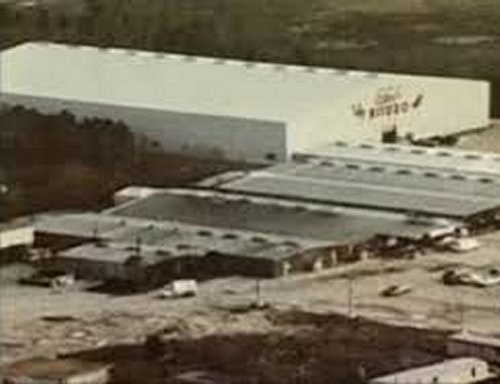 |
|
Gilley's was a fabled honky-tonk that was the focal point
of Pasadena nightlife during the Seventies and Eighties. In its
heyday, Gilley's was billed as the largest nightclub in the world.
It spanned 70,000 square feet, roughly 350 feet long by 200 feet wide. Featuring
local bands with singers like Mickey Gilley, Johnny Lee, George
Strait, Kris Kristofferson, and Reba McEntire, the club
often attracted crowds nearing its capacity of 6,000.
Gilley's featured a large dance floor, a boxing
machine, a mechanical bull, and other honky-tonk staples
like pool tables and bars. Sad to
say, Gilley's is no longer with us. It burned down in an arson fire
in 1989 after a falling out between co-owners Mickey Gilley and Sherwood Cryer. However, back when the movie was
filming, this saloon became just as much a part of Texas lore as JR
Ewing and the Dallas series that coincidentally was burning up TV
ratings at the same time.
At first glance, a casual visitor would have a hard time figuring
out why the place was so popular. With its concrete floor and
corrugated roof, the building looked more like an airplane hanger
than a dance club. Due to its drab interior featuring
a near-total absence of color, the club
was tough on the eyes. Given that the only decoration was the
word 'Gilley's' plastered everywhere, it was
described as the "ugliest dance club in America".
|
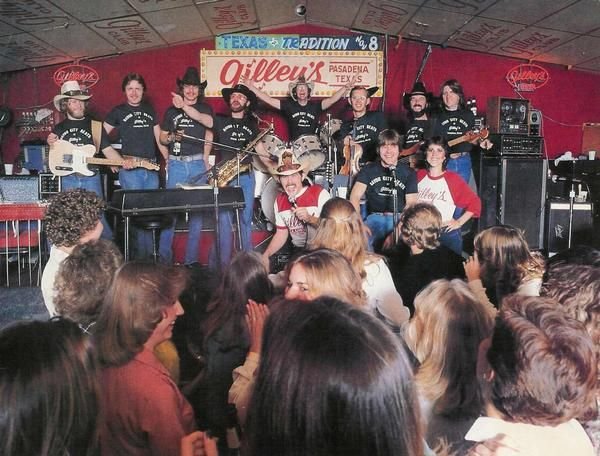 |
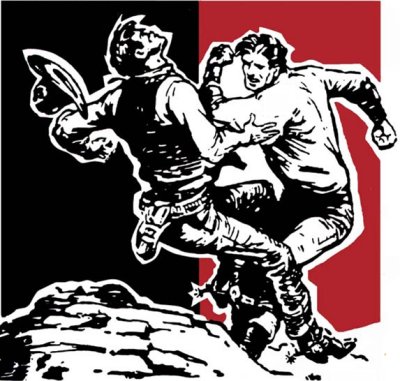 |
The restrooms were dirty.
The parking lot
was full of potholes. There was a pervasive odor of sweat and
spilled beer. The heat was terrible.
Even Mickey Gilley admitted the place was a dive. "It was filthy," he
said. "When it rained, there was water in there. Try dancing in
mud puddles. When it got cold,
it was cold in there. When it got hot, it was hot in there.
Sherwood Cryer made the club bigger, but he didn't make it better."
Gilley's
was a very rough place. This rundown club was known for plenty of
fighting. It was no surprise the clientele preferred the
'Outlaw Country' sound because there were a lot of angry people who
considered this place their personal fighting ring. On any given Saturday, you might see more brawls than your average ice hockey match.
One regular said, "With all the lowlifes who come in and drink
themselves silly, if they don't get into at least one scrap, they
think their weekend is wasted."
Sherwood
Cryer was once asked about the BIGGEST free-for-all he ever
witnessed at his place. One time a teacher's convention
had come to Houston. On a Saturday night a busload of men
and women from all parts of the country had shown up to take in the
Gilley's experience. Like everyone else, the teachers were curious as the club's fame was beginning to soar. They
all went to sit in one of the corners of the cavernous club.
Thanks to those bratty kids, teachers must have a lot of frustration to let go of. Pretty soon
they began to have too much fun. These teachers got liquored up and began
to fight, first with each other, then they took on the
regulars! Uh oh.
|
Cryer sent over two
bouncers, then four, then every bouncer and
large patron he could find in an attempt to restore order. But
these were tough teachers. Believe it or not, the
drunken teachers ended up beating the crap out of every bouncer and wannabee in that melee.
Finally
Cryer had to call in the Pasadena Police and EMTs. The police arrived in
force with riot helmets. They brandished serious-looking
batons. When the schoolteachers found themselves being
surrounded by these officers, they reacted by attacking the cops as well! Eventually many of these rowdy educators were hauled
off to jail. Afterwards, to Cryer's dismay, the cops shut down
the club for the rest of the night.
Nevertheless, despite its
frequent fighting and dilapidated appearance,
there were
plenty of people willing to overlook the club's shortcomings.
From
the moment the movie started filming, Gilley's began to rival the Eiffel Tower as a must-see
tourist attraction. By the way, I am not kidding.
Every
night hundreds of regulars showed up to
drink, dance, fight, flirt, make out, bullshit, shoot pool, and see
who would get their nuts cracked on El
Toro, the club's famed mechanical bull. Bob Claypool of the Houston Post wrote: "Gilley's was,
quite simply, the most Texan of them all, the biggest, brawlingest,
loudest, dancingest, craziest joint of its kind ever made."
|
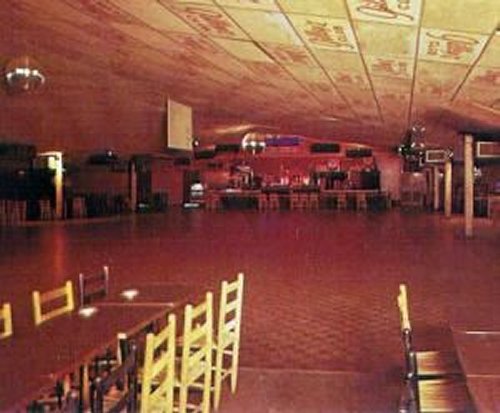 |
So the question we have to ask is this:
How on
earth did a complete dump like
Gilley's ever become
a national
symbol for popularity?
|
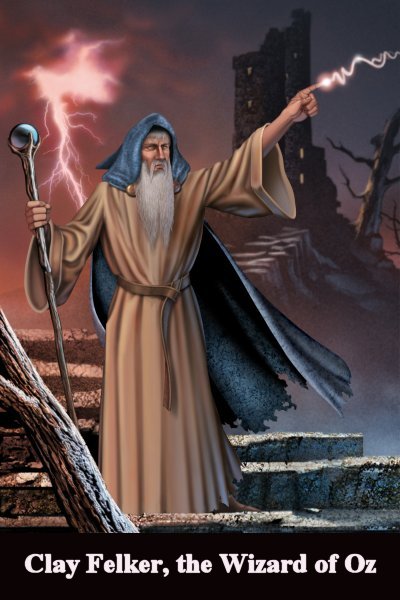 |
Starting the
night Clay Felker visited Gilley's in June
1978, he waved his magic wand and said, "Let there be
Country-Western Dancing in Houston, Texas!"
Nor do he stop there. Before Felker was through, the
entire country plus Russia and Mars knew Urban Cowboy
was on its way.
Why was this
Gilley's story so urgent to Clay Felker? If we
recall, Felker called Aaron Latham at 3 am in the morning urging him
to take the first flight to Houston.
I mean, really now, what's the hurry? Couldn't it have waited
a day or two? Gilley's wasn't goin' anywhere.
Felker's reason is now apparent. He had just discovered the opening he needed to make the
next Saturday Night Fever. This is
what Felker had been waiting for. Felker was about to make his
score. He didn't want to
waste a single second.
Aaron Latham, writer:
"Felker
knew exactly what he was doing. Soon after
the tale was published, sure enough, Hollywood came calling for the rights,
which eventually went to Paramount Pictures.
So many people wanted to buy it that I was able
to get first crack at writing the script. Before long, I was
taking transcontinental flights to that cruel city (Hollywood) that had
abused the talents of Fitzgerald and Faulkner (but was nice to
me).
Paramount couldn't
wait. They fast-tracked it.
Work on the movie began in
December 1978, just two months after my story was published in
Esquire."
So why did the
Paramount moguls bite so fast? They were on board from
the moment 'Ready Set Go'. The easy answer, of
course, would be John Travolta.
But that would be
incorrect. From what I
gather, Clay Felker sold the movie rights to Aaron Latham's
Esquire story BEFORE John Travolta entered the
picture. How Felker managed to pull that off is beyond me.
Wish I could have been there to hear the sales pitch.
In my opinion, Felker's Herculean accomplishment alone justifies calling
him 'The Wizard of Oz'.
|
That said, once
Travolta signed on, Felker hit warp speed. He went to
Houston's club owners. "We have John Travolta.
Forget Disco, go Western." He went to the New York
fashion district. "We have John Travolta."
He went to the country music industry. "We have
John Travolta." He went to the Houston media.
"We have John Travolta." Felker worked
tirelessly to promote. Trust me, his efforts were
rewarded, especially here in my hometown which went crazy
over Travolta's presence.
Once
he climbed on board, Travolta's presence validated the
considerable
Urban Cowboy hype.
It was the
'Absolute Certainty' that blew my mind.
Considering everyone I knew was convinced that Urban Cowboy
was the next big thing, I decided Travolta was worth every penny they
were paying him. I was getting a
first-hand lesson in the economic value of Star
Power. When
Saturday Night Fever came out, no one knew it
was coming. Thanks to Clay Felker and the John
Travolta Bandwagon, the entire country went on hyper-alert.
Using Travolta's reputation plus Felker's personal contacts,
the Wizard created an admirable frenzy of pre-debut hype for
Urban Cowboy.
|
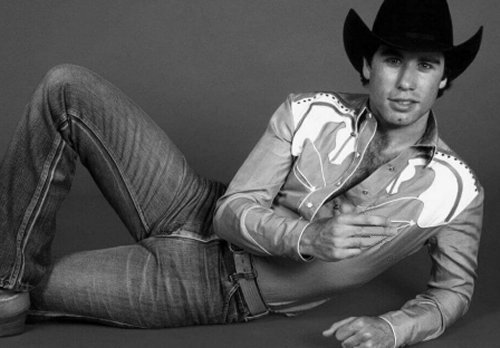 |
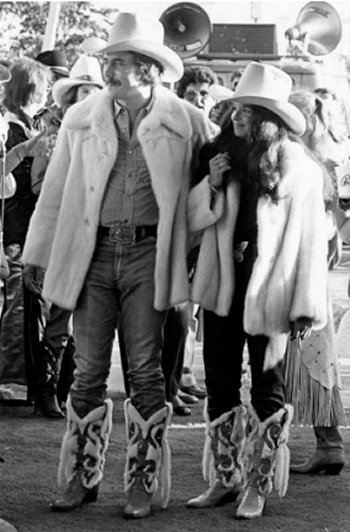 |
Personally, I was
humbled by the man's star power. A lot of
my dance student friends told me they would not dream of
going to see this movie
if Travolta had not been in it. However, now their curiosity was
out of control. Thanks to the media buzz, the entire
city of Houston anticipated Travolta would do the same thing for Western dancing
that he had done for Disco.
Talk about
charisma! Well before the
movie was released, Travolta was already selling
clothes and soundtrack albums like crazy.
Nightclub businessmen
throughout Houston were gambling small fortunes on the
potential of a Travolta-inspired Western
craze. Nor was Travolta's effect limited to Houston.
Travolta inspired a change in 1980. Not just a change
in country music, but rather a change in the culture of the
nation.
As if by magic,
cowboy hats and cowboy boots were showing up on Wall Street,
in Times Square, on yachts at Cape Cod, in BMW's speeding
down Sunset Boulevard. In Manhattan three piece suits were replaced
with Wrangler Jeans and open collar cowboy shirts. No
businessman worth his salt would dare appear in public
without his new boots. The
chic martini set put aside their gin and ordered themselves
a Lone Star beer just to prove they were Real Kickers at
heart. Yee haw, yippee-eye-yo, ride em', Cowboy!
This scene was
especially well coordinated here in Houston.
Men
and women took leave of their senses and
paraded around the city with unabashed pride in their
outlandish country costumes. Some of the weirdest
outfits I have ever seen appeared with startling regularity
in random places such as grocery stores, movie
theaters and restaurants.
Convinced that getting Travolta to star was a stroke
of genius, I had to tip my hat to the Wizard on a daily
basis. However, the mystery of Travolta's presence
continued to nag at me.
As I watched the
hysteria reach fever pitch, I was desperate to understand how this unknown Wizard had persuaded John Travolta
to star in this movie in the first place. Considering
Travolta's participation went totally against his image, I
could not imagine what the actor's motivation had been to appear.
Yes, thanks to
one brilliant move after another, Houston
anticipated the coming
Country Trend with supreme confidence. But who was
behind all of this?
These
developments convinced
me that signing
John Travolta to do this movie was an act of sheer genius!
This opinion remained unchanged for 40
years.
And then
one day I learned the truth.
John Travolta had to BEG to be in this movie.
|
After Paramount
agreed to film the movie, they never bothered to
approach Travolta. Why not? The reason is obvious...
Travolta was wrong for the part. Another reason
Paramount never approached Travolta is they probably
assumed he would not be interested due to the Reverse
Typecasting issue.
According 'Urban
Cowboy Turns 35', an article in Texas Monthly
(June 2015, John Spong), the producers ruled
Travolta out.
•
Jack Larson, Producer: "Director Jim Bridges
hadn’t even thought of John; his first thought was Dennis Quaid."
•
Aaron Latham, Writer:
"I thought it was crazy, a big mistake."
•
Dew Westbrook,
Gilley's Romeo: "I told Jim Bridges and Paramount
Pictures I didn’t think Travolta oughta play me.
Too Disco."
|
So that
leaves us to wonder how Travolta managed to end up in
this movie. Here is where I believe Fate kicked in.
This was Clay Felker's Brightest Day. And because
it was his Brightest Day, Felker was on the same kind of
roll that Robert Stigwood once enjoyed with
Saturday Night Fever.
And what was Robert Stigwood's key to success?
John Travolta. And what was Clay Felker's key to
success? John Travolta. A very unusual
Coincidence, yes?
But how on
earth did Felker get Travolta to do this movie?
Believe it or not,
Felker had nothing to do with it.
At a time when the casting
for Urban Cowboy was nearly complete, John Travolta made an unprompted last-minute
request to appear in the movie.
Although he had not yet signed a contract, Dennis Quaid
had already agreed to play Bud. Travolta could
have cared less. He wanted this part and he wanted
it BAD!
In other words,
even though no one associated with Urban Cowboy
had lifted a
finger to contact him, the biggest star in Hollywood had just offered
to do the movie. Only one
problem: the Director turned Travolta down.
However, we
are getting ahead of our story. What made Travolta
pursue this role in the first place?
|
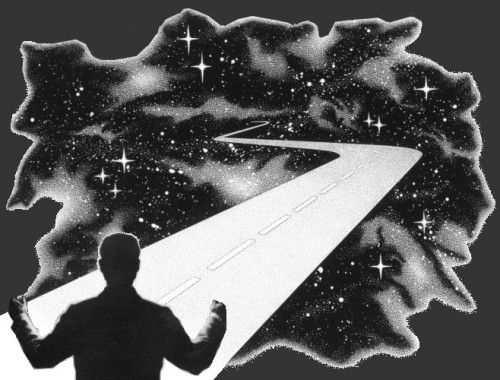 |
JOHN TRAVOLTA'S DARKEST DAY
|
It is 1976.
Robert Stigwood owns the movie rights to Grease.
He sees John Travolta in the TV show 'Welcome Back,
Kotter' and immediately recognizes the young man is
perfect for the lead in Grease. Known
for decisive action, Stigwood moves swiftly to secure
Travolta to a three-movie million dollar contact.
In the
great Rollercoaster of life, Robert Stigwood enters his Brightest Day and takes his
young protégé John
Travolta along with him. Together they take the best joy ride of their life,
Saturday Night Fever and Grease.
However, as the Wheel of Fortune turns, they are
both due for their Darkest Day to kick in (and so it
does). It all
went back to the contract Travolta had signed with
Robert Stigwood. The contract called for
Travolta to do three movies. Saturday
Night Fever, Grease, and, uh,
yeah, that third Stigwood blockbuster.
Okay, Reader, can you name
John Travolta's third Stigwood movie? If
you are stumped, don't feel bad. I drew a
compete blank and I bet you will too. The odds
of getting it right are slim and none. But if
you happen to know the answer off the top of your head,
then I definitely want you on my Movie
Trivia team.
The main
reason no one remembers Travolta's third Stigwood movie is because apparently no one
ever saw it. Well, maybe a few people saw it, but they won't
admit it. I've seen a couple clips and I don't
blame them. Okay, enough. Either you've finished looking it up on Google or you're waiting
for me to tell you. So let's get to it.
|
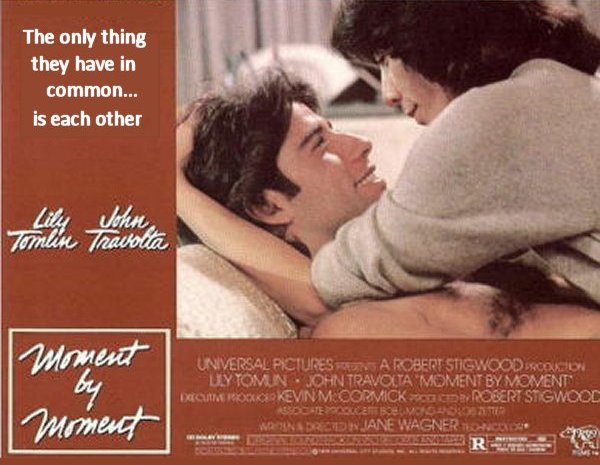 |
Moment by
Moment
(1978) with Lily Tomlin was Travolta's third
Stigwood movie. The movie was an unmitigated flop.
"The
only thing they have in common is each other."
What utter
nonsense.
They had
NOTHING IN COMMON. Any two people off the street reading
lines from the script would have been more effective. Cast as a 'May-December'
romance, Tomlin and Travolta were mismatched stars
from the start. They had the worst chemistry
in cinematic history. Tomlin did not click at
all as Travolta's cougar girlfriend. No
sizzle, just fizzle.
However, the
thing that catapulted this flick from mere flop to
catastrophic failure was an unanticipated bad break.
Lily Tomlin bore an uncanny resemblance to Travolta
in both facial structure and body type. Making
matters worse, their matching hair styles made the
weird resemblance impossible to miss.
On screen,
Tomlin looked more like Travolta's mother than his
girlfriend.
It did not help that Tomlin was 16 years older, thus
making the mother-son connection a biological
possibility.
The moment
their icky hot tub scene screamed 'Incest!',
everyone in the theater got a bad case of the
heebie-jeebies. The movie was so creepy,
droves of people got up and left.
|

The moment you look at the
pictures and think 'Mother and Son', it is virtually
impossible to see them as lovers without that incest thing screaming
in your brain. Like a bad odor, you cannot ignore it,
you cannot put it out of your mind. The Travolta-Tomlin
resemblance was so painfully obvious, one would think the Director or
someone would have noticed during the filming. More
likely everyone had the sense to look the other way, sort of
like the 'Emperor's New Clothes'. For crying out loud,
will someone give Travolta a crew cut or stick a blonde wig on
Tomlin? Just the thought that Travolta
was seducing his mother was enough to make the sex scenes unbearable to watch.
The bad news was that
no one went to see this movie. The good news
was that no one went to see this movie. The
movie was pulled from theaters as fast as humanly possible,
but the ensuing criticism drove Travolta to madness. Although
his star
power survived intact due to the movie's total anonymity, his
tender ego was
seriously damaged by the withering negativity.
During the filming of Urban Cowboy, Rolling
Stone writer Timothy White asked Travolta
to comment on the Moment by
Moment fiasco.
(Rolling Stone, JULY 1980, John Travolta: True-Grit
Tenderfoot)
|
 |
Timothy White Interview Question:
"John, Saturday
Night Fever turned you into a cultural icon. What
was your reaction to the impact of Moment by Moment?”
Travolta:
"I
think with Fever, people were evaluating my impact
more than they were my acting. As for Moment by Moment,
my God, you would have thought I had committed murder or
something! It was serious trouble.
And
the weird thing was that everything in my life up to that
point, well, I don’t know of a career that had gone more
smoothly and successfully than mine. Welcome Back
Kotter, Carrie, Boy in the Plastic Bubble, Saturday Night Fever and
Grease - they were five major strokes that were 100
percent all right.
Unfortunately, at the very peak, when the lights were on
full and everybody was watching and waiting, here comes Moment by
Moment. Boom. Failure! And not just ordinary
failure, but gut-wrenching, horrible failure. I cringe every time I think about it."
|
I
don't know about you, but it sounds to me like Travolta was
describing in stark detail what it is like to enter your
Darkest Day. The
major characteristic of one's Darkest Day is that the Talent
and Experience that got you to success in the first place
suddenly stops working. No matter how talented you are
or how hard
you work, nothing seems to work anymore.
So what happened next? After
Moment by Moment, one assumes Travolta licked his wounds, dusted himself
off and got ready to begin filming Urban Cowboy.
Such was
not the case. His next film was
American Gigolo.
American Gigolo? You mean the Richard Gere movie? Yes. It turns out that John Travolta was
obligated to film American Gigolo.
|
AMERICAN GIGOLO AND URBAN COWBOY
|
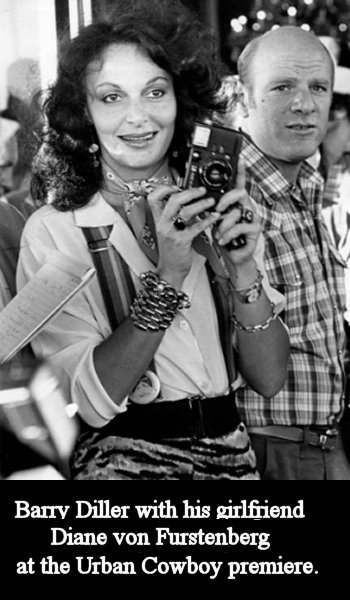 |
Barry Diller
became the CEO and Chairman of Paramount Pictures after
Robert Evans stepped down from his role as head of
production. While serving as head of production at
Paramount from 1967 to 1974, Evans had been responsible for
several very famous movies such as Love Story,
Rosemary's Baby, Godfather,
and Chinatown. After stepping down,
Evans transitioned to an independent producing role while
remaining associated with the studio. As an example,
Robert Evans was the man who produced Urban Cowboy.
When Barry
Diller was given control by Gulf+Western, Paramount's parent
company at the time, he was told to address the studio's
financial struggles. Diller focused on developing 'high
concept' films, leading to blockbusters like
Saturday Night Fever and Grease. As chief executive
officer, Diller was closely
involved with the filming of Urban Cowboy.
According to an
article in Hollywood Reporter (May 2025,
McKinley Franklin), Diller
acted as right-hand man to Paramount president Michael
Eisner. For this reason, Diller was present when Travolta asked
Eisner to release him from his contractual
obligation to do American Gigolo. This
is how Diller knew the inside story behind Travolta's cold
feet.
According to
Diller, Travolta told Eisner his reason to quit was the recent
passing
of his mother as well as the death of his girlfriend Diana Hyland
due to cancer.
However, Diller suspected the more likely reason was the "somewhat gay
subtext" in American Gigolo.
All Travolta
could think about was his Moment by Moment
failure, the first black mark on his career.
Embarrassed to have his
masculinity questioned,
Travolta experienced tremendous self-doubt. The script
for American Gigolo
reminded him too much of the passive, effeminate pretty boy
role he had played subservient to a domineering Lily Tomlin.
Fearing American Gigolo was not 'manly'
enough, Travolta
wanted out.
Preferring to seek a more masculine role, Travolta let the part go to Richard Gere instead.
Given that the ultra-confident
Richard Gere was perfect for the Gigolo role,
I think Travolta made the right decision. Given the
depths of his insecurity at this point in his life, I think
he would have bombed in that role. Travolta was hardly
astounding in Urban Cowboy, but from what I
gather he enjoyed being in the film and regained his
confidence in the process.
|
Regarding
American Gigolo, as
a compromise, Michael Eisner said Travolta could withdraw if
he wanted to, but he had to agree to make two films instead
of one. Eisner told Travolta to study some of the
other films in production and see which one he liked. By coincidence,
Paramount Pictures was
producing both Urban Cowboy and American Gigolo.
Travolta
had no idea Urban
Cowboy even existed. Nor did he know he had
been overlooked for the part. In fact Travolta learned
about the movie mere seconds before the train left the
station.
At the time,
Paramount was casting for Urban Cowboy,
but no one had given any thought to asking Travolta if he
was interested. Why should they? Aaron Latham
had written the
script with Houston-born actor Dennis Quaid in mind.
As a result, Quaid was already lined up ready to play the
role of Bud. However, Quaid had not signed yet, so
technically the role was still open. I imagine Dennis Quaid would have
been good in this role. Unlike pretty boy John, Quaid had a
rugged 'chip on his shoulder' look that suggested he had actually thrown
a punch or two at some point in his life.
Through the grapevine, Travolta heard
Urban
Cowboy had dancing and fighting, so he asked
a friend for a copy of the script. After reading the
script, Travolta wanted to do the movie.
In Travolta's own words:
"Shortly after Moment by Moment, I read
the script for Urban Cowboy. I wanted to
check out Gilley's and the mechanical bull. It seemed
like something new to me, with a rough element that made
it exciting. The bull riding, the dancing, the dangerous
atmosphere, it had all the right elements. It was a
one-shot project and I made my own decision, took my own
risk."
|
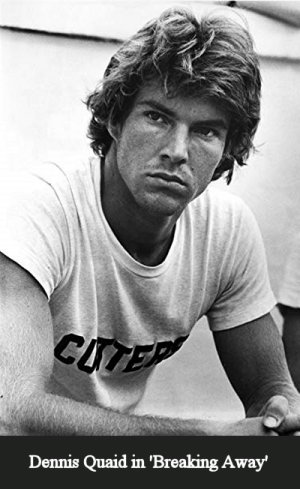 |
In hindsight, given the details of his Moment by
Moment failure, Travolta's decision to chase this
script makes sense. Following the intense criticism
for appearing weak and girly in his previous role, Travolta
was understandably drawn to the macho image of playing a
tough Texas cowboy.
Obviously the dancing interested Travolta. As the star of the two most popular dance
movies since the days of Fred Astaire, Travolta was no doubt
drawn to a familiar situation that promised to restore his damaged
confidence.
So Travolta took the unusual step of
calling director Jim Bridges to lobby for the part.
We assume Bridges was ecstatic. Wrong. Director Bridges
was totally locked into Dennis Quaid, so he was not at all
encouraging. However, Bridges did at least tell Travolta he would talk it over with writer Aaron Latham and the
producers to see what they thought. Apparently the
group universally rejected the idea. They thought hiring Travolta was ridiculous.
As for Clay Felker, he was not in the picture at
the moment. Once he sold the movie to Paramount, Felker
took a back seat until it was time to crank up the publicity
machine.
Otherwise I imagine Felker would have stood up for Travolta
in a flash.
At any rate,
Jim
Bridges got back on the phone and told Travolta not to
bother, adding that Dennis Quaid had
already been promised the spot.
Undeterred, Travolta insisted on an audition. Bridges
didn't know what to say. He had not anticipated
Travolta would push this hard. So Bridges ran the idea
past the Muckamucks again. And again the
brain trust were all of one mind. They were convinced that Dennis Quaid,
the
rawboned native Texan, was right for the role and equally convinced that Travolta, the
Jersey kid with the thick East Coast accent, was a big
mistake. So the Moguls told him no again. But
they said it politely enough to leave the door ajar.
So picture this. Thanks to Saturday Night Fever
and Grease, John Travolta occupied the Center
of Cinematic Universe. Nevertheless, when Travolta inquired, they
said no. Then they said no again.
After being told twice
he was wrong for the part,
Travolta was stunned. But he did not quit. Not
only did he insist a third time, he said he would buy his own ticket to Texas. At this
point, they gave in. Out of
professional
courtesy the Moguls finally relented and said Travolta could
have an audition if it was that important. Desperate
and looking for redemption after Moment by Moment, Travolta agreed to their
demands.
Imagine that. John Travolta, the
hottest star on the planet, was
being forced to BEG for an audition. Tough crowd, huh?
The Sun God has just
come knocking and this was the best they could do.
It is a
well-known fact that A-list Hollywood Gods and Goddesses do not have to
read for anything. Their previous work speaks for
itself. Not this time. Travolta was told he would need
to sell himself for this role and he was humble enough to
agree. However, before flying down for the audition,
Travolta did something
clever. He took speech lessons from a dialect
coach and
worked on his drawl.
Learning to 'Talk Texan' beforehand would pay off.
However, his most brilliant move involved the legendary
mechanical bull. Realizing the script called for
'El
Toro'
to play an important part of the movie,
Travolta had a mechanical bull
installed at his house to prepare for his role.
Practicing
for two months before filming began,
Travolta became so proficient he was able to replace
his stunt double for the riding
scenes. Hmm. Nice selling
point.
Buying his own ticket, Travolta hopped on a plane and flew
to Houston from California to
chase the part.
"Howdy, y'all!! I'm
right darn tootin'
glad to be here tooo-day. Got my boots on and
I'm cowboyed up 'bout dancin' the Texas Twostep and kickin'
some bad guy ass in this here movie! Now y'all need to show me where this
gall darn,
bone-breakin' mechanical bull is hidin'! I got somethin'
to show you."
Thanks to his mastery of El Toro,
Travolta swept the producer, writer and director off their feet.
To begin with, apparently Travolta had more guts than people
gave him credit for. He was the best mechanical bull
rider in the cast, something which required equal parts
skill and courage (people get hurt riding these creatures).
As an added surprise, Travolta turned out to
be a kicker at heart. Little did they know Travolta
had always fancied himself a cowboy. Travolta wore
boots wherever he went, drove a pickup truck and loved
Westerns.
In Travolta's own
words (from Texas Monthly):
"Right
away I went to Texas to rub elbows with cowboys, real
and urban, and it was a revelation. I was used to
New York and L.A., where people looked over each other's
shoulders at parties for someone more interesting to
talk to. These Texans just wanted to have a beer,
a whiskey, and a fantastic time. I spent a good
month hanging out with them, and another month training at my
ranch in Santa Barbara, where I'd installed a mechanical
bull and a dance floor."
Realizing just how serious Travolta was about this, the Muckamucks relented. Who knows, maybe
Clay Felker caught word and talked some sense into them.
Whatever the reason, the moguls thanked their Lucky Stars. Once people began to compliment
the Paramount Moguls for landing the hottest actor on the planet,
no doubt they had the nerve to
take credit for their 'brilliant' casting decision. However, in their
heart of hearts,
they had to wonder how on earth they were lucky enough to
land the hottest star on the planet
after doing everything in their power to discourage him.
Can you believe those
dimwits made JOHN TRAVOLTA
crawl
for an audition!?!?!
It really makes you wonder. It is always important to
work hard. And there is nothing wrong in wishing for
good luck. But it is another thing entirely to have a
King Midas bonanza handed to you when you have done
absolutely nothing to deserve it. Indeed,
this was such an astounding case of Dumb Luck,
one might be tempted to ask if Fate was involved.
Guess
who was the happiest person on the planet?
Clay Felker. Once he had Travolta lined up, it
was off to the races. From what I gather,
Travolta was incredibly helpful with promotions.
He did interview after interview, wrote autographs,
posed for photos, and was invariably nice to
everyone he met in Houston. When the Bee Gees
came to town, Travolta showed up on stage
unannounced and proceeded to dance a jig. The
crowd got so excited they nearly had a riot.
Riding Travolta's Star Power, the
movie would rake in $50 million on a budget of $10 million.
Plus God knows how many weird western outfits and
cowboy soundtrack albums were sold strictly because Travolta was
involved.
Seriously, this story belongs in
Ripley's Believe it or Not. That's the thing about success.
Sometimes we succeed because we have talent and because we
work hard. And
sometimes we succeed because it is better to be Lucky than Smart.
Just ask Clay Felker.
Indeed, Travolta seemed Heaven Sent.
"Why
shouldn't Truth be stranger than fiction?
Fiction, after all, has to make sense." --
Mark Twain.
|
|
|